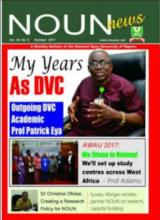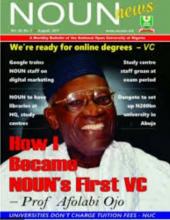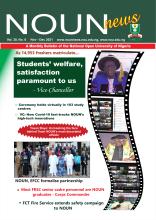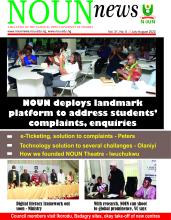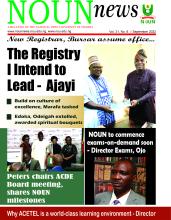
The need for a heavy investment in Open and Distance Learning (ODL) to complement the traditional systems of education and respond to behavioural and technological changes has been identified as the needed catalyst towards the ODL transformation agenda of 2030 and 2063.
Consulting President and Chief Executive Officer, Laweh Open University College, Accra, Ghana, Prof. Goski Alabi, stated this recently while delivering a virtual presentation, titled: “Sub-Saharan Higher Education Enrolment Ratio: Bridging the Yawning Gap,” organised by the National Open University of Nigeria-Regional Training and Research Institute for Distance and Open Learning (NOUN-RETRIDOL) in Abuja.
Alabi also listed the need to address the perceptual challenges of ODL with hard facts to de-construct the perception that ODL is inferior, understanding the global politics of education and using the power of networks and collaborations to overcome the political barrier to ODL education in Africa, focusing on skills, competency, technology and entrepreneurial –based education, among others.
According to her, for a total transformation of ODL in South Saharan Africa (SSA), there must be an awakening of capable, competent and confident Africans to embrace the vehicles for the transformation of prioritizing tertiary education, as well as a paradigm shift from the traditional silos of brick and mortar educational concept to one that embraces openness and technology mediation.
“I believe that the over prioritization of primary and secondary education, over higher education and Technical Vocational Education and Training (TVET) in the region contributes largely to un-employability,” she said.
The expert further explained that South Saharan Africa (SSA) has 48 countries and a population of over one billion, which makes it one of the largest regions in the world but with very little emphasis on higher education, whose tertiary gross ratio is just 9.4 within SSA region.
In her research, she posited, there were nine million students enrolled in the tertiary education sector, which is just about 3% of all student enrolments in the region and 4% of total tertiary education students enrolled globally.
This, according to her, reveals that without urgent action, the situation is likely to deteriorate as the region faces a rising demand for tertiary education due to the number of graduates from the secondary level.
“The impact of the global pandemic on African Universities in SSA, since the lockdown, quite a number of universities has not fully resumed activities. Hence, leading to the adoption of e-learning in the educational system and this has exposed the importance of ODL as well as the Technical and Vocational Education and Training (TVET) in SSA region in response to 21st century requirements,” she added.
While calling on governments and policy makers within the SSA region to focus on using ODeL, TVET and blended learning to improve references and functionality, Alabi stressed that doing that by the stakeholders will address the exiting gap through lifelong and flexible learning opportunities.
Earlier in his opening remark, the director, RETRIDOL, Prof. Patrick Eya, who welcomed the participants, also commended the presenter for delivering “a well-prepared paper that suits the timing we are in.”
Eya further appreciated all the participants, even as he announced the next virtual meeting slated to come up on 23rd June 2021.
- Log in to post comments
- 173 views

